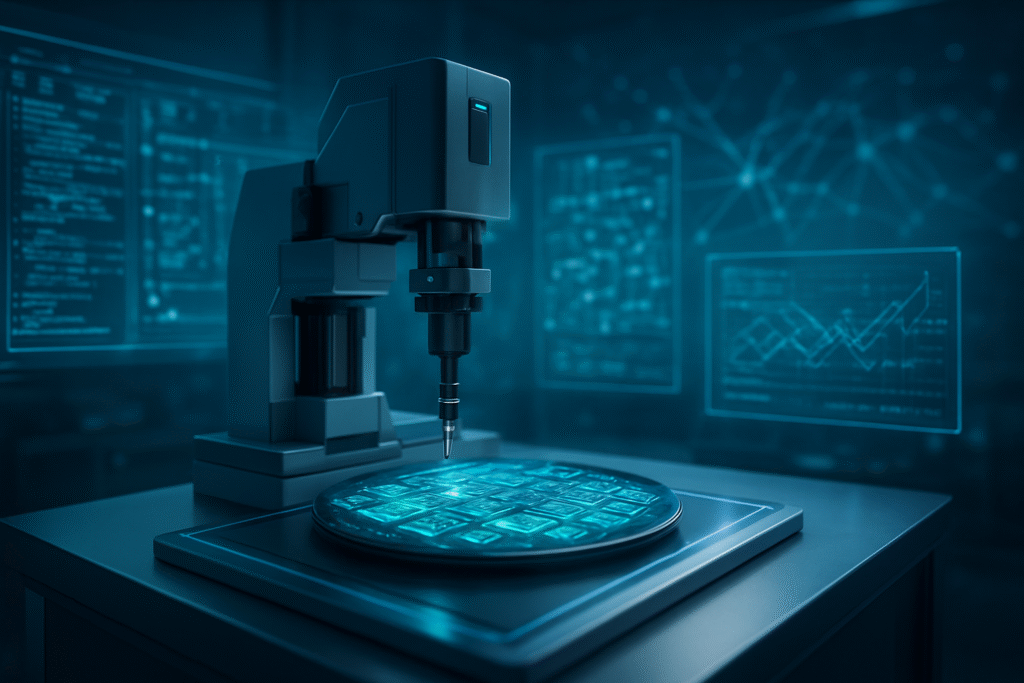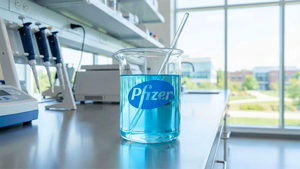
The relentless march of Artificial Intelligence (AI) is fundamentally reshaping the technology landscape, and at its core lies the intricate world of semiconductor chips. While much attention is paid to the breakthroughs in AI algorithms and applications, an equally crucial, though often overlooked, element is the rigorous and sophisticated testing required for these advanced processors. This critical need for robust semiconductor testing is not only ensuring the quality and reliability of AI hardware but is also driving significant growth for specialized companies like Teradyne (NASDAQ: TER), positioning them as indispensable partners in the AI revolution.
The burgeoning field of AI demands chips of unprecedented complexity, powerful processing capabilities, and high data throughput. These attributes necessitate meticulous testing to guarantee their performance, reliability, and efficiency across demanding applications, from massive data centers to intelligent edge devices and autonomous systems. The immediate significance of this trend is multifaceted: it accelerates development cycles, manages exponential complexity, enhances chip quality and security, and fuels substantial market growth and investment across the entire semiconductor ecosystem. In essence, semiconductor testing has evolved from a secondary step to a strategic imperative, critical for innovation, quality, and rapid market readiness in the age of AI.
The Technical Crucible: Advanced Testing for AI's Complex Brains
AI chips represent a paradigm shift in semiconductor architecture, moving beyond traditional CPU and GPU designs to incorporate highly specialized accelerators like NPUs (Neural Processing Units), TPUs (Tensor Processing Units), and custom ASICs (Application-Specific Integrated Circuits). These chips are characterized by their massive core counts, extreme parallelism, and intricate interconnects designed for high-bandwidth data movement—all optimized for deep learning and machine learning workloads. Testing such intricate designs presents unique challenges that differentiate it significantly from previous approaches.
Unlike the relatively predictable instruction sets and data flows of general-purpose processors, AI chips operate on vast matrices of data, often with mixed-precision arithmetic and highly pipelined execution. This requires advanced automated test equipment (ATE) to verify functionality across billions of transistors operating at blazing speeds. Key technical considerations include ensuring signal integrity at multi-gigahertz frequencies, managing power delivery and thermal dissipation under heavy loads, and validating the accuracy of complex arithmetic units crucial for AI model inference and training. Furthermore, the sheer volume of data processed by these chips demands sophisticated data-intensive test patterns and analytics to detect subtle performance degradations or latent defects. Early defect detection at the wafer level is paramount, as it significantly improves yields, accelerates development timelines, and prevents costly issues from propagating into final production stages. Initial reactions from the AI research community and industry experts highlight the growing recognition that robust testing is not merely a quality control measure but an integral part of the design process itself, with "design for testability" becoming a core principle for next-generation AI accelerators.
Shifting Sands: Competitive Implications for the AI Industry
The escalating demand for advanced AI chip testing has profound implications for AI companies, tech giants, and startups alike, creating a new competitive landscape where access to cutting-edge testing solutions is a strategic advantage. Companies like Teradyne (NASDAQ: TER), with its robust portfolio of automated test equipment, stand to benefit immensely from this development. Their ability to provide high-performance, high-throughput test solutions for complex System-on-a-Chip (SOC) designs tailored for AI applications positions them at the forefront of this wave. Teradyne's recent financial reports underscore this trend, with strong revenue growth driven by AI-related demand across compute, networking, and memory segments, leading to upward revisions in analyst price targets.
Major AI labs and tech companies, including NVIDIA (NASDAQ: NVDA), Google (NASDAQ: GOOGL), and Intel (NASDAQ: INTC), which are heavily invested in designing their own AI accelerators, are directly impacted. They require sophisticated testing partners or in-house capabilities to bring their chips to market reliably and efficiently. This creates a competitive bottleneck where companies with superior testing methodologies can achieve faster time-to-market and higher quality products. Startups entering the AI hardware space face even greater pressure, as the cost and complexity of advanced testing can be a significant barrier to entry. This dynamic could lead to increased consolidation in the AI hardware sector or foster tighter partnerships between chip designers and ATE providers. The need for specialized testing also creates potential disruption to existing products, as older, less rigorously tested chips may struggle to meet the performance and reliability demands of critical AI applications, thereby accelerating the adoption of new, thoroughly validated hardware.
The Broader Canvas: AI Testing's Wider Significance
The pivotal role of semiconductor testing in AI development fits seamlessly into the broader AI landscape and ongoing technological trends. It underscores a fundamental shift where hardware, once seen as a static foundation, is now a dynamic and rapidly evolving component critical to AI's progress. The increasing complexity of AI models, particularly generative AI, demands ever more powerful and efficient hardware, which in turn necessitates more sophisticated testing. This creates a virtuous cycle where AI itself is being leveraged to enhance testing processes, with AI and Machine Learning (ML) algorithms identifying subtle patterns and anomalies in test data, predicting potential failures, and optimizing test sequences for greater efficiency and speed.
The impacts extend beyond mere chip quality. Enhanced testing contributes to the overall reliability and security of AI systems, crucial for deployment in sensitive applications like autonomous vehicles, medical diagnostics, and critical infrastructure. Potential concerns, however, include the escalating cost of advanced ATE, which could become a barrier for smaller players, and the challenge of keeping pace with the rapid innovation cycle of AI chip design. Comparisons to previous AI milestones, such as the rise of GPUs for deep learning, highlight that breakthroughs in software are often enabled by underlying hardware advancements and the infrastructure, including testing, that supports them. This era marks a maturation of the AI industry, where robust engineering practices, including thorough testing, are becoming as important as algorithmic innovation. The global AI chip market is experiencing explosive growth, projected to reach hundreds of billions of dollars, and the market for AI in semiconductor ATE analysis is similarly expanding, cementing the long-term significance of this trend.
The Road Ahead: Future Developments in AI Chip Testing
Looking ahead, the landscape of AI chip testing is poised for continuous evolution, driven by the relentless pace of AI innovation. Near-term developments are expected to focus on further integrating AI and ML directly into the test equipment itself, allowing for more intelligent test generation, real-time fault diagnosis, and predictive maintenance of the test systems. We can anticipate the proliferation of "in-situ" testing methodologies, where chips are tested not just for individual components but for their performance within an emulated system environment, mimicking real-world AI workloads. The rise of advanced packaging technologies, such as chiplets and 3D stacking, will also drive new testing challenges and solutions, as inter-chiplet communication and thermal management become critical test vectors.
Long-term developments will likely see the emergence of fully autonomous testing systems that can adapt and learn, optimizing test coverage and efficiency without human intervention. Potential applications and use cases on the horizon include "self-healing" chips that can identify and reconfigure around defective elements, and AI-powered design tools that incorporate testability from the earliest stages of chip conception. Challenges that need to be addressed include the standardization of AI chip testing protocols, the development of universal benchmarks for AI accelerator performance and reliability, and the need for a highly skilled workforce capable of operating and developing these complex test systems. Experts predict a continued convergence of design, manufacturing, and testing, with AI acting as the connective tissue, enabling a more holistic and efficient chip development lifecycle.
The Cornerstone of AI's Future: A Comprehensive Wrap-up
The crucial role of semiconductor testing in AI development is an undeniable and increasingly significant facet of the modern technology landscape. As AI continues its rapid ascent, the need for meticulously tested, high-performance chips has elevated companies like Teradyne (NASDAQ: TER) to the status of critical enablers, experiencing substantial growth as a direct result. The key takeaway is clear: robust testing is not an afterthought but a foundational pillar supporting the entire AI edifice, ensuring the reliability, efficiency, and ultimate success of AI applications across every sector.
This development marks a significant milestone in AI history, underscoring the industry's maturation from pure research to large-scale, dependable deployment. The long-term impact will be profound, leading to more resilient AI systems, faster innovation cycles, and a more competitive and specialized semiconductor industry. What to watch for in the coming weeks and months includes further advancements in AI-driven test automation, the integration of advanced packaging test solutions, and strategic partnerships between chip designers and ATE providers. The unsung hero of semiconductor testing is finally getting its well-deserved recognition, proving that the future of AI is as much about rigorous validation as it is about groundbreaking algorithms.
This content is intended for informational purposes only and represents analysis of current AI developments.
TokenRing AI delivers enterprise-grade solutions for multi-agent AI workflow orchestration, AI-powered development tools, and seamless remote collaboration platforms.
For more information, visit https://www.tokenring.ai/.





